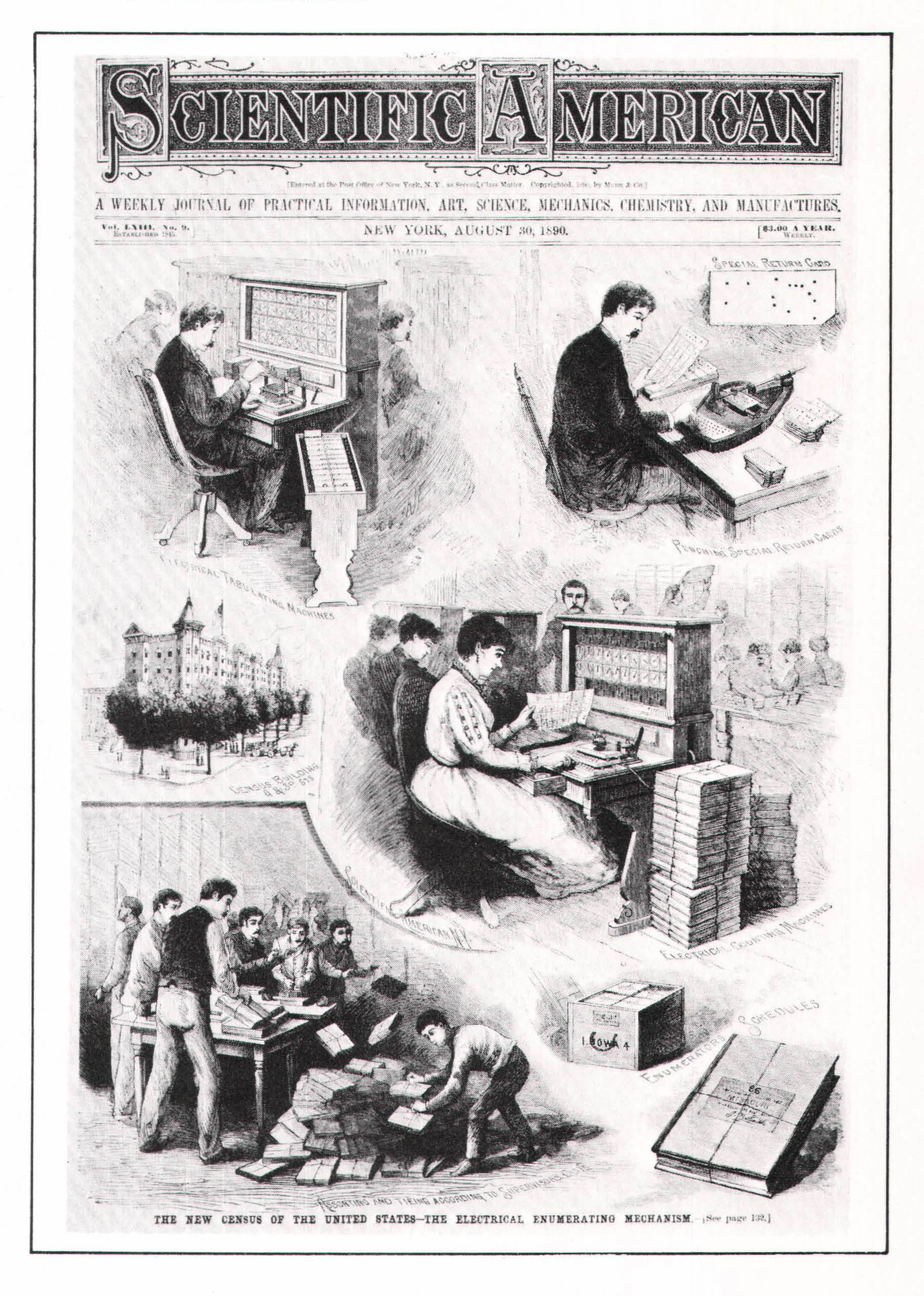
The Census was impressed with Hollerith’s work, but it decided to conduct an official test of the system before making a commitment. The trial pitted Hollerith’s machines against the “chip” system of Charles F. Pidgen and the “slip” system of William C. Hunt, both Census officials. In the chip system, data from the schedules were transcribed to colored cards; in the slip system, the information was written onto slips of paper in colored inks. In both cases, the cards and slips were counted by hand. The competition called for the transcription and tabulation of a thick sheaf of schedules, compiled during the 1880 census, covering 10,491 people in St. Louis. There were two parts to the trial: the time required to transcribe the schedules and the time required to tabulate the data. Not surprisingly, Hollerith’s system swept the boards. It showed its greatest advantage in the tabulation portion of the test, completing the job eight to ten times faster than the hand-counted slip and chip methods:
Pleased with the results, the Census ordered fifty -six tabulators and sorters (the machines were rented. not purchased), and Hollerith was in business.

His machines went to work in July 1890, shortly after the completion of the headcount. The first task was a general tally of the population, and Hollerith devised a special counter for the job, a typewriterlike device equipped with twenty keys, numbered 1 to 20. The clerks read the schedules, which represented only one family per sheet, then pressed the key signifying the number of people on the schedule. Some operators handled 9,200 schedules, listing 50,000 people, in a single day. By August 16, only six weeks after the count had begun, the Census had a tally: 62,622,250. With great pride and fanfare, the figure was officially announced in October, and everyone was suitably amazed. Other statistics quickly poured out of Washington, the typical Census clerk processing an average of 7,000 to 8,000 cards a day. (The record was 19,071.)

Compared to the 1880 census, which had taken nine years and cost $5.8 million, the 1890 count was completed in fewer than seven years, but it had cost $11.5 million, almost twice as much. Under the circumstances, there was some controversy about the benefits of automation – an issue that still hasn’t been settled. The Census, which had shelled out only $750,000 in rental fees for Hollerith’s equipment, ascribed the financial disparity to the expense of running a far more careful and thorough statistical analysis of the raw data; the 1890 census was more comprehensive than any previous headcount. Indeed, the Census estimated that it had actually saved about $5 million in labor costs. If, for the sake of argument, we assume that the disparity wasn’t caused by bad management and political featherbedding, then Hollerith’s system apparently possessed hidden costs – the great temptation to use the equipment to the hilt. All those millions of cards, those thousands of watts of electricity, those scores of statisticians, had run up a big bill.

Hollerith’s system was adopted all over the world. In late 1890, Austria ordered several tabulators and sorters for its census, and Canada, France, and Russia also requested them. After much initial resistance, private industry began renting them too. Swamped with paperwork, large companies like the Chicago department store Marshall Field & Co., the New York Central Railroad Company, and the Pennsylvania Steel Company moved the equipment into their accounting and inventory departments. Soon they couldn’t live without it. By the early 1900s, Hollerith’s firm, the Tabulating Machine Company, had more customers than it could handle. However, because the firm leased rather than sold its equipment, which provided a steady and quite profitable stream of income but produced a thinner cash flow, the company was always short of capital. The best solution seemed to be a merger, and in 1911 Hollerith’s firm joined with three other outfits to become the Computing-Tabulating-Recording Company (CTR), which eventually became the International Business Machines Corporation, or IBM.
